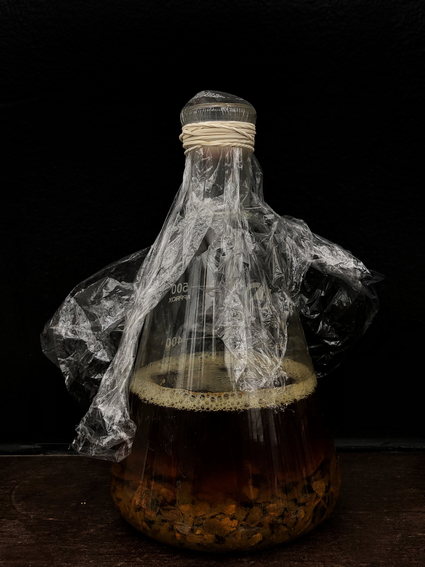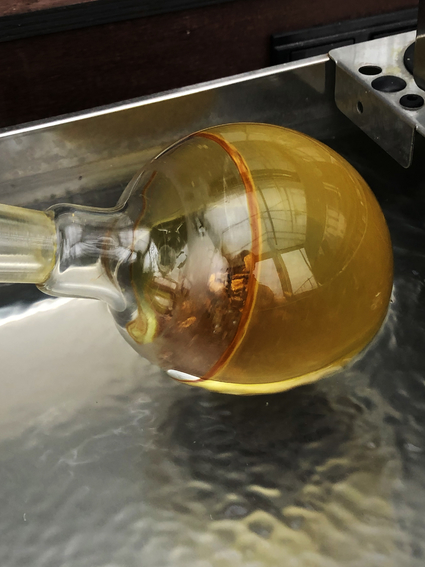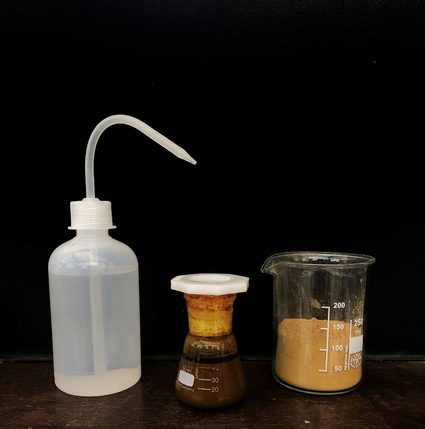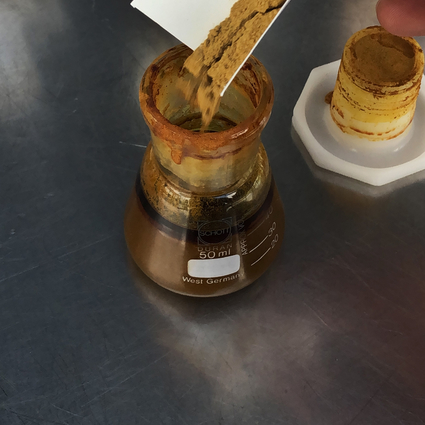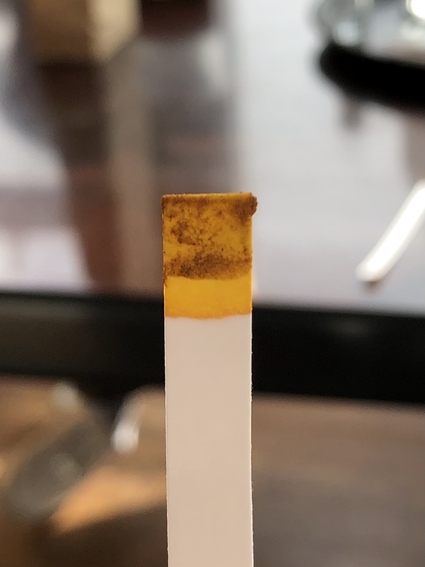Methods overview - Graphic composition of an existing image. Original image author: W.carter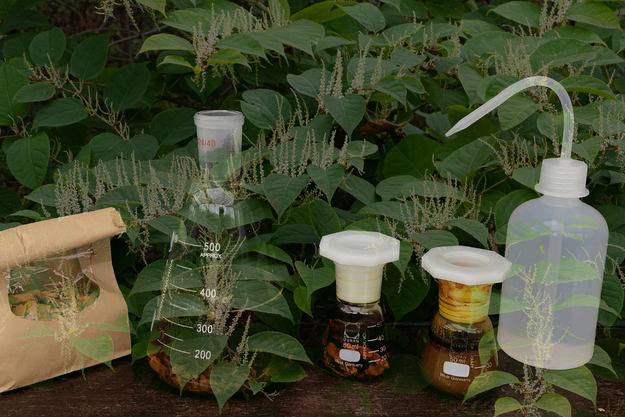
If we come closer to the Japanese knotweed and scrub their leaves, we will notice a slight fresh smell similar to rhubarb and cut grass. What we smell is the volatile organic compounds (VOCs), which are a self-defense mechanism that plants have to protect themselves from any external dangers, such as insects, mammals, fungi, and even the sunlight. If we would compare it with chemical warfare, the VOCs would be the fumes of war.
However, their odor is also their identity. It is what distinguishes them from other plants, and makes them unique. The more we breathe them in and smell them, the more we get to know them. We create a reciprocal relationship with the plant, where they smell us and let them be smelled by us. By exploring the olfactory world of this story we can imagine new ways of relating to invasive species and open up new ways of dealing with them.
At the Aroma Lab, we are currently busy exploring different ways of extracting the Japanese Knotweed scent using different methods such as:
Dry knotweed chunks fermententing.
Composing a fragrance based on the knotweed, using the aroma library.
Distilling dry knotweed chunks.
Tinctures mixing knotweed powder and ethanol.
Pouring knotweed powder.
Tinture color.
